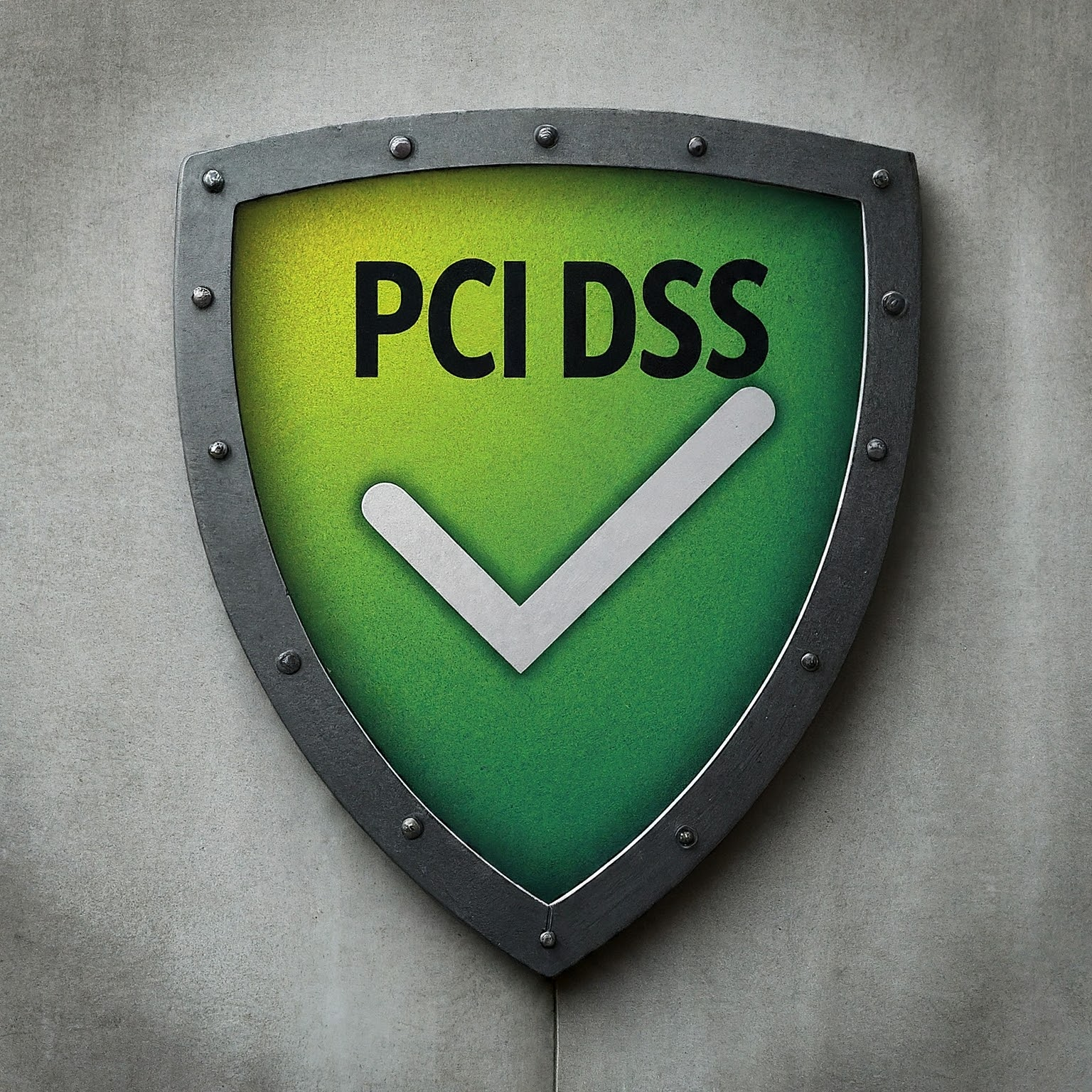It can be a challenging road to maneuver — the path towards PCI DSS compliance in cloud environments. This post provides you with an overview of cardholder data and cloud security, to understand best practices for implementing PCI compliant controls within your overall system architecture. If you’re looking at migrating to the cloud consider reviewing our guide: “CRAFTING A CLOUD MIGRATION STRATEGY: A PRACTICAL GUIDE TO SEAMLESSLY TRANSFORMING YOUR BUSINESS,” which can provide some good advice/ perspective on how best to plan and execute a successful migration.
Introduction

PCI DSS applies to organizations that process credit cards, and is mandated by the PCI Security Standards Council (PCI SSC). The standard defines a set of security controls required to ensure the safe handling and storage of cardholder data during a transaction. Moving your IT estate to the cloud requires you consider some new things (thouh we will cover these in other articles), but knowing how to both achieve and maintain compliance is arguably what matters most0 if not, tuen expensive fines, reputational damage or further data breaches can occur.
What is PCI DSS Compliant Cloud?
This one starts out with the world of PCI DSS, which is essential to setting security for cardholder data in the cloud. This article explains what PCI DSS is, why it’s important, and also the shared responsibility model to explain compliance in most cloud platforms. Lastly, we will discuss the latest version of PCI DSS standard.
PCI DSS — What is it and why you should care?
The Payment Card Industry Data Security Standard (PCI DSS) is a set of security requirements aiming to protect cardholder data such as credit cards number, etc., at any point it reside during its lifecycle.
Why is PCI DSS important? Data breaches can be devastating. PCI DSS compliance helps organizations:
- Secure cloud architectures to manage data breaches.
- Show customers that security is a priority
- Prevent being fined, and protect your brand.
Shared Responsibility Model: Who Owns PCI DSS Compliant Cloud?
Cloud computing introduces a shared responsibility model for PCI DSS compliance:
- Customer: Responsible for retaining control of their cardholder data in the cloud (controls, configurations, access management).
- Cloud Service Provider (CSP): The security of the service provider in this measure, includes securing its data centers or networks and virtualization platforms.
This commonality is significant because good PCI DSS compliance in the cloud will make it possible to pass an audit. It takes both sides to build the foundation.
While nothing is absolute, there are indeed ‘best practices to follow when it comes trying for PCI DSS Compliance.
Best Practices for PCI DSS Compliance

Achieving PCI DSS compliance in the cloud requires a multi-layered approach. With that in mind, here are the five most important actions you must take to maintain security over cardholder data within your cloud.
1. Maintain a Secure Network
- Firewalls: Implement firewalls to restrict unauthorized access to your cloud resources.
- Intrusion Detection and Prevention (IDS/IPS): Use intrusion detection systems to detect malicious over activity on your network.
- Vulnerability Management: Conduct vulnerability assessments in the cloud environment on a regular basis and promptly remediate any findings to reduce exposure.
2. Implement Robust Data Security
- Data encryption – use strong cryptographic or encryption algorithms like AES (Advanced Encryption Standard) to encrypt cardholder data in transit and at rest.
- Vigorous Access Controls — Ensure that your access controls (like RBAC – Role-Based-Access-Control, MFA -Multi-factor Authentication) tight enough to minimize the view of cardholder data only for authorized person.
- Secure Storage — Utilize advanced storage solutions offered by your cloud provider with secure physical access controls to hold cardholder data.
3. Continuous Monitoring and Logging
- Real-time Monitoring: Continuously monitor your cloud environment for suspicious activity and potential security incidents using robust security monitoring capabilities.
- Log Management: Centralize and analyze log data from various sources to identify security threats, investigate incidents effectively, and maintain PCI DSS compliance.
- Regular Audits: Conduct regular audits (internal and potentially external by a qualified security assessor – QSA) to verify compliance with PCI DSS requirements.
4. Secure Infrastructure
- Infrastructure as Code (IaC): Leverage IaC tools to automate secure configurations and ensure consistent security posture across your cloud infrastructure.
- DevSecOps Integration: Integrate security practices throughout the cloud development lifecycle (DevSecOps) to identify and address security vulnerabilities early in the development process.
5. Manage Access and Identity
- Limit Access: Grant access to cardholder data only to authorized personnel based on the principle of least privilege.
- Strong Authentication: Enforce strong authentication mechanisms like multi-factor authentication (MFA) to further secure access to sensitive data.
- Regular Reviews: Regularly review and update access rights to ensure they remain aligned with user roles and responsibilities.
By following these best practices and complying with PCI DSS, organizations can ensure that their cloud environment is secure and that they can protect cardholder information. However, it is crucial to realize that PCI compliance in the cloud is not complete.
Additional Considerations for Maintaining PCI Compliance Cloud

While the best practices outlined previously provide a solid foundation, achieving and maintaining PCI DSS compliance in the cloud requires ongoing vigilance. Here are some additional considerations that further discuss PCI DSS compliant cloud environment:
Leveraging Cloud Provider Security Features
Many cloud providers offer robust security features and services that can significantly aid in your PCI compliance journey. For example, Google Cloud Platform offers features like Key Management Service for secure encryption key management and Cloud Identity and Access Management (IAM) for granular access control. Familiarize yourself with the security offerings of your chosen cloud provider and leverage them to enhance your overall security posture.
Importance of Regular Assessments and Penetration Testing
Steps like launching vulnerability management programs and carrying out repeated penetration testing can help around in keeping the cloud platform safe and less vulnerable to data breaches. Implementing vulnerability management programs and conducting regular penetration testing enables you to take a proactive approach by finding vulnerabilities before they can be exploited. In the end, this strengthens your defenses and helps secure a safe environment for cardholder data. Frequently perform internal vulnerability scans so you can discover anything inadvertently deployed or weak in your cloud environment.
- Engage a qualified security assessor (QSA) to perform periodic PCI DSS audits and ensure compliance with the latest standards.
- Consider penetration testing to simulate real-world attacks and assess your cloud environment’s ability to withstand them.
Compliance Challenges in the Cloud
The move to cloud poses different compliance-related obstacles from a traditional on-premise environment. Consider these few important factors :
- Shared Responsibility Model: Understanding the shared responsibility model between you and your cloud service provider (CSP) is imperative.
- Dynamic Cloud Platforms: The cloud infrastructure is like a not fixed thing, because of the ever-evolving nature must configure, monitor and adjust security in order to comply.
- Keeping Up with Evolving Threats: The threat landscape is constantly changing; be aware of new innovations and ensure that corresponding security measures are in place.
Proactively addressing these challenges through proper adoption of security best practices and exhibiting a mature monitoring posture will help organizations navigate the complexities that PCI compliance in a cloud environment introduces, ultimately ensuring their cloud infrastructure defends against threats as well meets its goal to protect cardholder data.
Conclusion
Following the best of practices defined in this guide and by enforcing stringent encryption mechanisms with loyal network security controls, you can have your cloud platform secure at hand a good check for PCI DSS compliance. Keep in mind that complying with PCI DSS is not only a point-in-time checklist but evolutionary effort. So, regular assessments and penetration testing in addition to keeping abreast of the latest threats is critical for maintaining a level security playing field if you will when it comes protecting cardholder data.
As cloud technology continues to evolve, staying informed about emerging trends is crucial for optimizing your cloud environment. Explore our companion article, “UNVEILING THE CLOUDSCAPE: EMERGING TRENDS SHAPING CLOUD COMPUTING IN 2024 AND BEYOND,” for insights into cutting-edge advancements that might impact your cloud security strategy.





